ADVOS Procedure
Extracorporeal Blood Purification for Simultaneous Support of the Primary Excretory Organs
The ADVOS procedure (ADVanced Organ Support) provides multi-organ support to the kidneys, liver and lung while simultaneously correcting acid-base disorders in patients.
The ADVOS multi is a further development of conventional dialysis equipment: instead of normal dialysate, it uses dialysate enriched with human serum albumin and enables targeted adjustment of the pH value of the dialysate.
To ensure lasting and efficient detoxification, the device continuously reprocesses the dialysate enriched with human serum albumin, and toxins are effectively removed. The ADVOS procedure is successfully used in many German and Austrian clinics.
ADVOS Procedure: Extracorporeal Blood Purification for Simultaneous Support of the Primary Excretory Organs

Human Serum Albumin
Human serum albumin is a protein that is used in the human body to transport water-insoluble substances.
This includes, for example:
- Fatty acids
- Bilirubin
- Trace elements
- Certain vitamins
- Hormones
- Metals
- Nitrogen monoxide
- Medications
All these substances only become transportable after they have bonded to human serum albumin. Unlike conventional kidney dialysis, which only eliminates water-soluble toxins, the ADVOS procedure – by including human serum albumin in the dialysate – also removes protein-bound hepatotoxins and nephrotoxins, as well as hydrogen ions (H⁺) and bicarbonate (HCO₃⁻) and thus, indirectly, carbon dioxide (CO₂).
How the ADVOS Procedure Works
The ADVOS procedure is based on the principle of human serum albumin dialysis, with the advantages of a high flow of dialysate, low consumption of human serum albumin and improved toxin removal. The core process involves recycling toxin-laden human serum albumin dialysate by altering the pH and temperature in the purification circuit (ADVOS multi circuit) and then reusing the dialysate. This is done by transferring the dialysate to an acid leg and a base leg.
ACIDIC CIRCUIT
In the acidic leg, hydrochloric acid is added. Lowering the pH value causes positively charged toxins (e.g. copper) to be removed from the dialysate.
BASE CIRCUIT
In the base leg, sodium hydroxide solution is added. Increasing the pH value causes negatively charged toxins (e.g. bilirubin and bile acids) to be removed from the dialysate.
Representation of the ADVOS Procedure: One Procedure, Three Circuits

By playing, the YouTube provider may also set cookies and analyse your usage behaviour (tracking).
For more information, including a link to the provider's privacy policy, please see our privacy policy.
How the ADVOS Procedure Works
After the toxins are filtered out, the two legs merge again, the hydrochloric acid and the sodium hydroxide solution neutralise each other to form common salt and water (HCl + NaOH = NaCl + H₂O) and the now purified human serum albumin dialysate can once again be routed past the blood to remove further toxins.
As the human serum albumin is continuously purified and recycled, only a very small quantity of human serum albumin is required for efficient toxin removal. For 24 hours of treatment, only 200 ml of 20% human serum albumin is needed.
By specifically controlling the addition of acid and base, the user can adjust the pH value of the dialysate. The ADVOS multi adjusts the addition of acid or base according to which pH is desired (values between 7.4 and 9 are possible). This enables specific treatment of metabolic or respiratory acidosis, thereby removing CO₂. In addition, using alkaline concentrates with different concentrations of bicarbonate makes it possible to control the concentration of bicarbonate in the blood.
-
Standardised dialysate flow rate of 48 l/h, enabled by rapid preparation in both partial circuits
-
High detoxification capacity thanks to simultaneous removal of toxins in both partial circuits
-
H⁺ and CO₂ removal for treatment of metabolic and respiratory acidosis by means of individualised pH setting for the dialysate
-
Removal of protein-bound uraemic toxins (e.g. indoxyl sulfate)
-
Removal of ammonia
-
Unique recirculation circuit for dialysate enables continuous detoxification as opposed to complete removal of substances by means of adsorption or single-pass albumin dialysis
